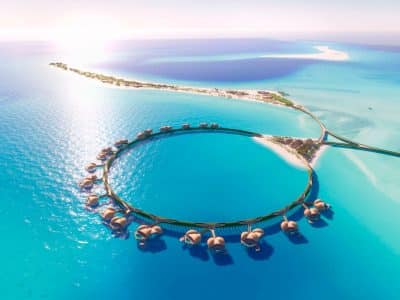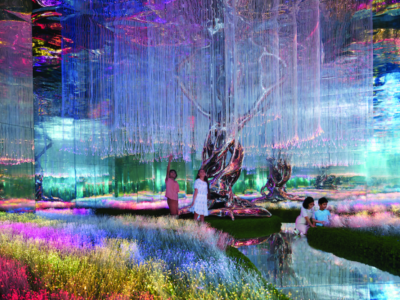An approach to sustainable building techniques across the Middle East using technology which originated thousands of years ago has won recognition from the United Nations.
Its designer, architect Sandra Piesik, presented her ideas to a summit conference held in Mexico during which the world body officially endorsed her approach to building using date palm material – specifically a project in the oasis city of Al Ain, Abu Dhabi, which is known as The Sabla, or Food Shelter.
The building provides storage and facilities for traders to sell perishable fruit, animal produce and vegetables, even in the hottest climate. It has been designed by Piesik and her company 3 ideas with assistance from structural engineers at the London office of BuroHappold. It has also received backing and a high level of support from the Abu Dhabi Tourism and Cultural Authority.
Each shelter utilises a palm leaf arch structure with fabric covering and is the result of a six-year research and development programme which was set up to demonstrate that using traditional materials and modern techniques can deliver cost effective, quick, environmentally sustainable solutions to social development projects in economically challenged regions.
The designers carried out extensive research in the structural use of palm leaves and constructed trial structures, prior to designing the arched gridshell frame.
As well as using traditional materials, the design has been modified by developing a technique to bundle the palm leaves together. They are then lapped to form long circular-shaped sections which can be curved into arched profiles to form the arched structure.
UK-based Piesik said “There are a number of benefits to local communities using these simple structures. They use free, readily available, date palm leaves, usually a wasted agricultural by-product.
“The structures are simple to erect by hand without the need for a mechanical plant on site, they leave no lasting residue as the tensile fabric can be reused and the leaves are of course biodegradable, while the skill set to create the shelters are widely locally available.
“In addition, the potential for adaption of the design and its uses is wide. As well as storage these gridshell forms can also be used for education, healthcare, communal and other buildings wherever an abundance of the natural building material grows.”








